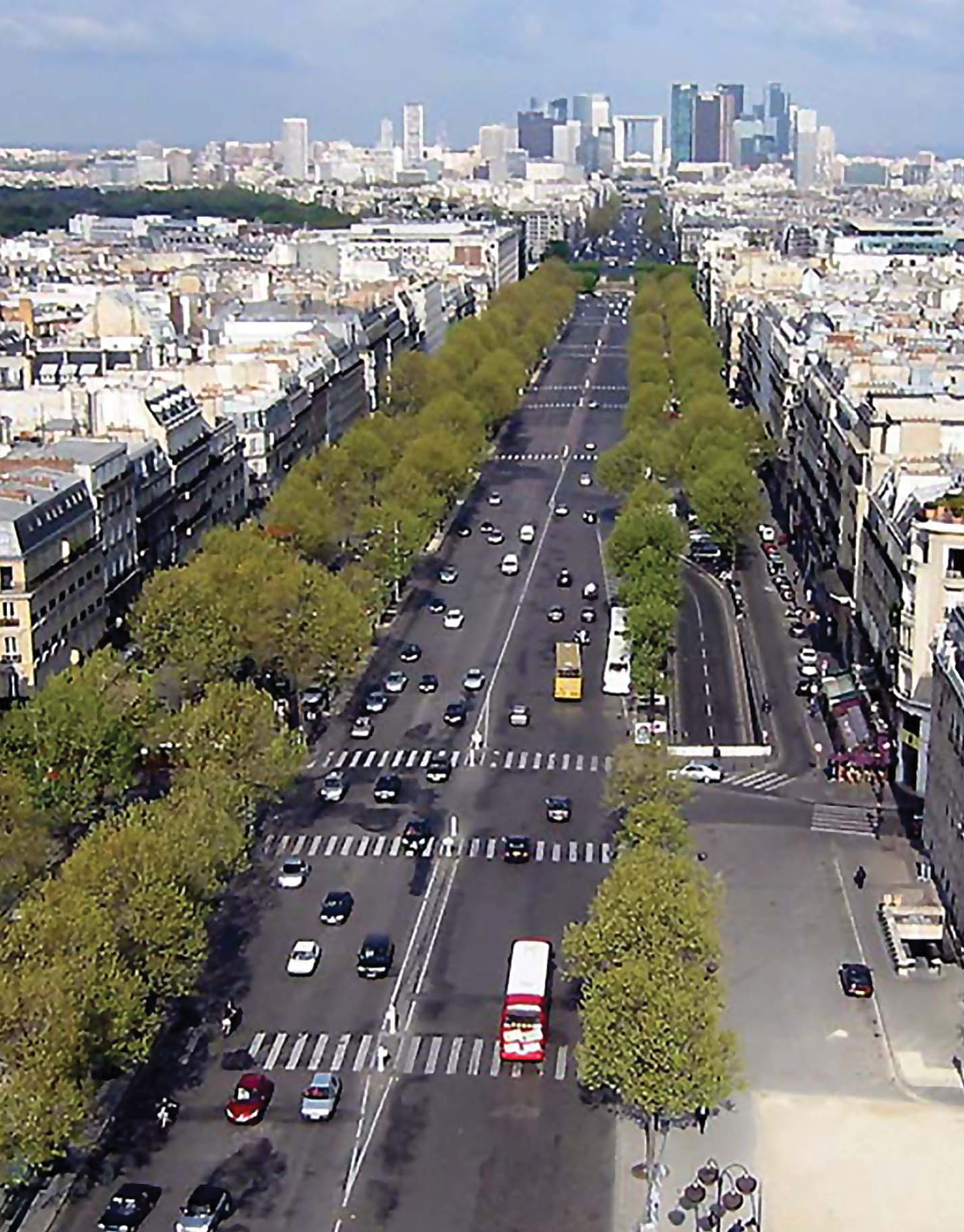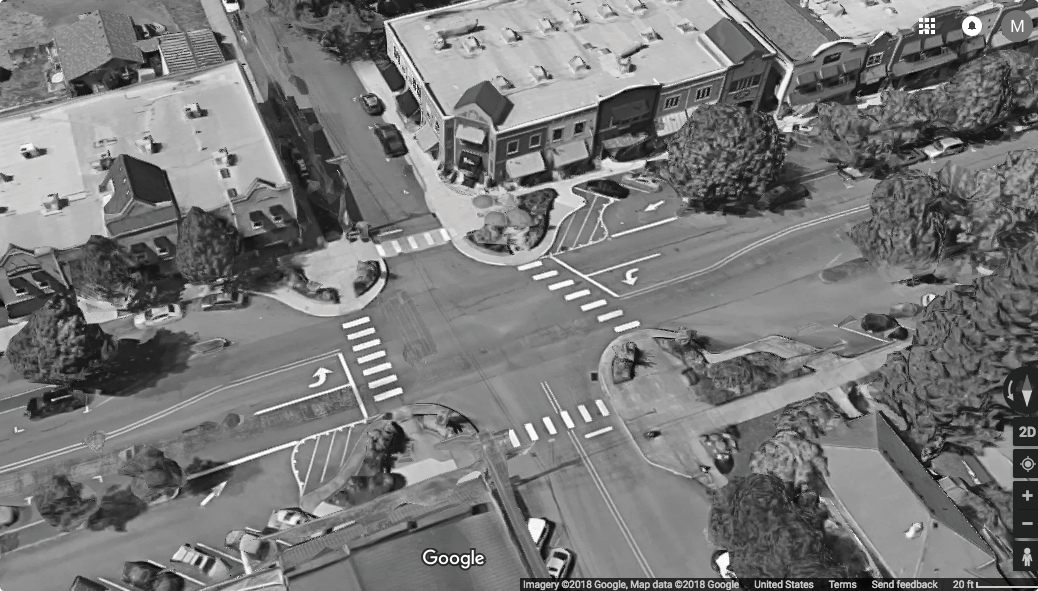…At a scale smaller than the Mobility Corridor we need slower surface corridors that still accommodate a higher volume of vehicular traffic.

__Problem-statement: The major surface arteries of cities can choke the life out of their neighborhoods.__
Discussion: There are several problems with major surface arteries in cities. One is that they lack safe places for pedestrians to cross at regular enough intervals. Another is that they are so fast-moving that their edges create unsafe and unattractive zones for pedestrians. In addition, bicyclists also require another level of mobility, as well as vehicles that need to move more slowly in order to park, or to pick up pedestrian passengers. These multiple (sometimes conflicting) needs have been met with the pattern of a multi-way boulevard, combining faster travel lanes, slower “slip lanes,” and ample spaces for pedestrians and bicycles to travel, and to cross the faster-moving vehicular lanes safely.

A multi-way boulevard design in West Linn, Oregon
Any high-speed vehicular corridor is of necessity out-of-bounds for the pedestrian. Even in urban situations where pedestrian crossings with traffic lights are in place, pedestrians will still feel threatened. The multi-way boulevard permits a mix of traffic and pedestrians as a compromise solution — but one that creates a more optimum balance between modes.¹
__Therefore: Periodically (typically at 800m or ½ mile spacing in both directions) create multi-way boulevards, consisting of several lanes for faster travel, slip lanes for slower travel and parking, wide pedestrian and bicycle sidewalk zones, and periodic crossings as frequent as possible, but not more than 400 meters apart. Make these beautiful urban spaces, with tree-lined medians and periodic focal points.__

Space multi-way boulevards regularly between Avenue patterns, and at the edges of each Pedestrian Sanctuary. Provide ample medians and Street Trees…
notes
¹ One of the best sources of information and research findings about multi-way boulevards is Jacobs, A., MacDonald, E. and Rofè, Y., The Boulevard Book. New York: Random House.
Image: via wikipedia.org by Luestling
See more Street Patterns